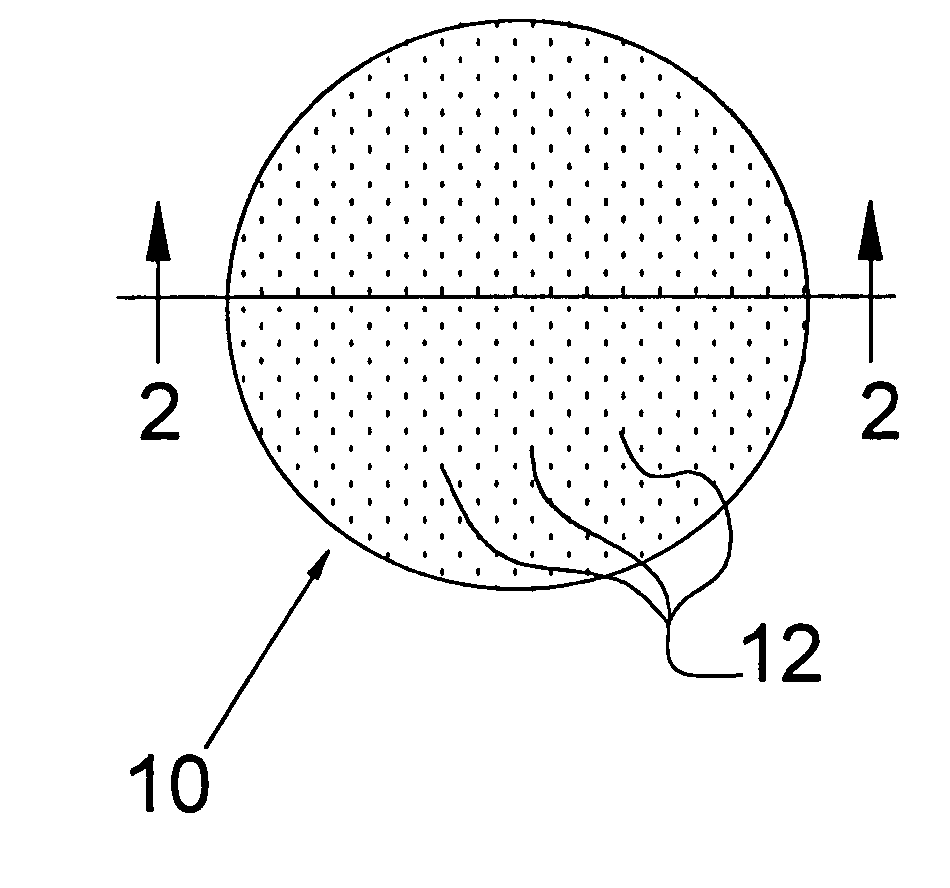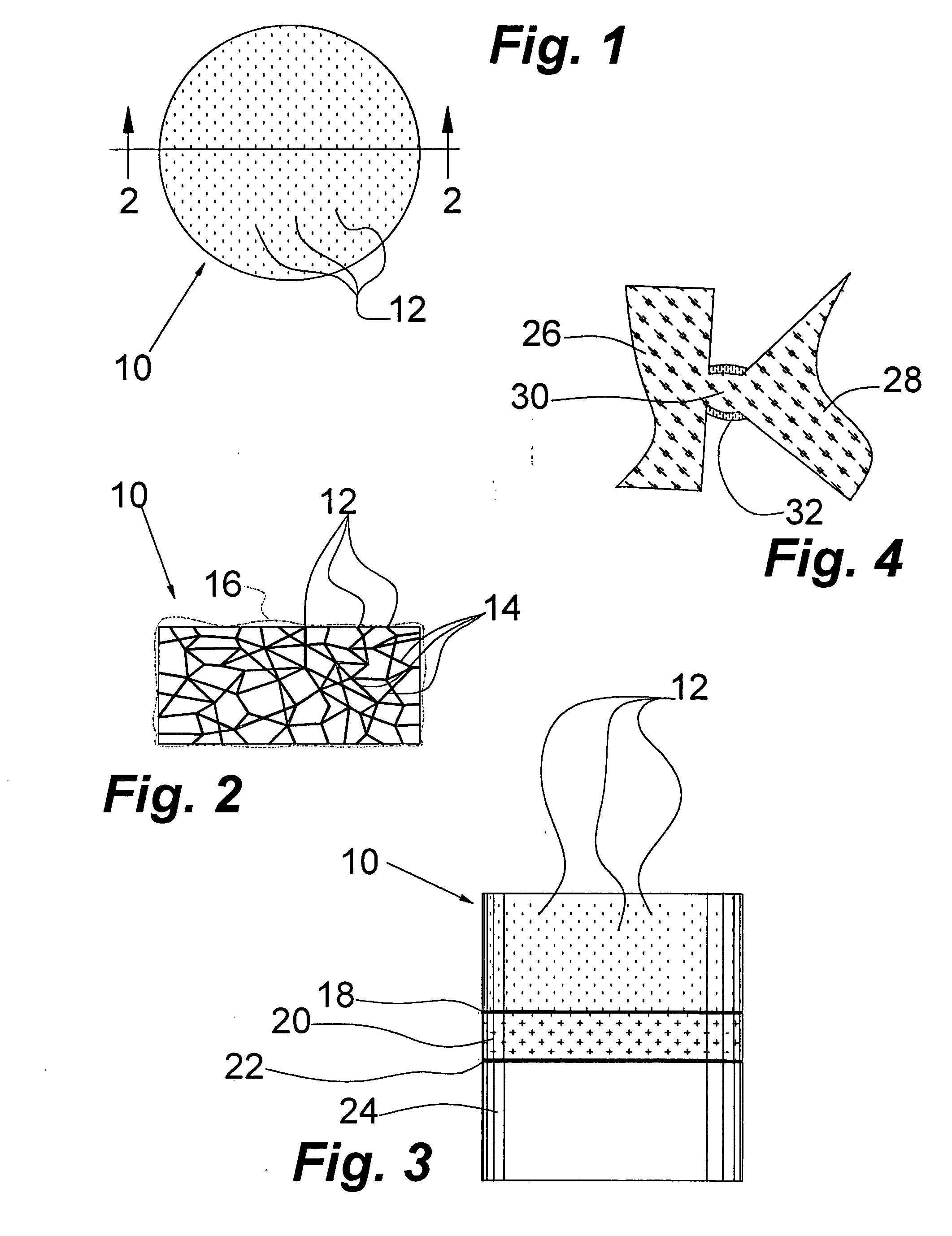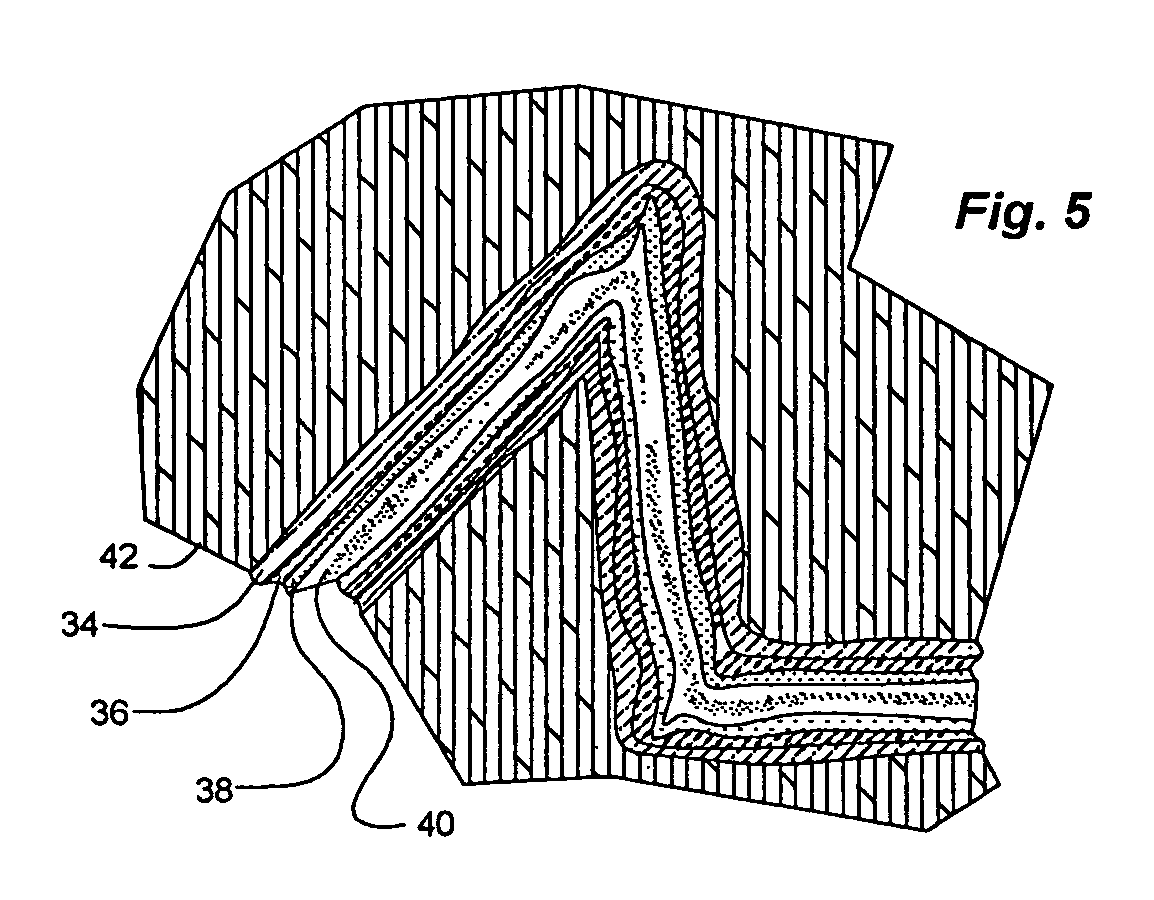Ceramic impregnated superabrasives
a technology of ceramic impregnating and superabrasives, which is applied in the direction of ceramicware, carbides, other chemical processes, etc., can solve the problems of reducing the durability increasing the risk of cracking at void volumes more than approximately 7 percent, and affecting the performance of the resulting compact, so as to achieve significant different modulus and reduce the surface area of the preform
- Summary
- Abstract
- Description
- Claims
- Application Information
AI Technical Summary
Benefits of technology
Problems solved by technology
Method used
Image
Examples
Embodiment Construction
[0035] Referring now to the drawings wherein like reference numerals designate identical or corresponding parts throughout the several views, there is illustrated generally at 10 a ceramic impregnated polycrystalline superabrasive compact. The pores within the compact occur in a generally evenly distributed reticulated network 14 that is open to the environment at openings of which 12 are typical. In use, the ceramic impregnated superabrasive compacts 10 are brazed or otherwise bonded at 20 to a substrate 24, such as, for example, tungsten carbide mounting member 24. The thickness of the bond 20 has been exaggerated for the purposes of illustration. Bond 20 is generally much thinner than is illustrated. The braze or other bonding adheres well at 18 to the impregnated preform, and at 22 to the mounting member 24. Both bonds 18 and 22 must be secure or the attachment will fail.
[0036] Self bonded monolithic polycrystalline superabrasive preforms are typically bonded at a crystalline p...
PUM
| Property | Measurement | Unit |
|---|---|---|
| Fraction | aaaaa | aaaaa |
| Fraction | aaaaa | aaaaa |
| Fraction | aaaaa | aaaaa |
Abstract
Description
Claims
Application Information
 Login to View More
Login to View More - R&D
- Intellectual Property
- Life Sciences
- Materials
- Tech Scout
- Unparalleled Data Quality
- Higher Quality Content
- 60% Fewer Hallucinations
Browse by: Latest US Patents, China's latest patents, Technical Efficacy Thesaurus, Application Domain, Technology Topic, Popular Technical Reports.
© 2025 PatSnap. All rights reserved.Legal|Privacy policy|Modern Slavery Act Transparency Statement|Sitemap|About US| Contact US: help@patsnap.com



